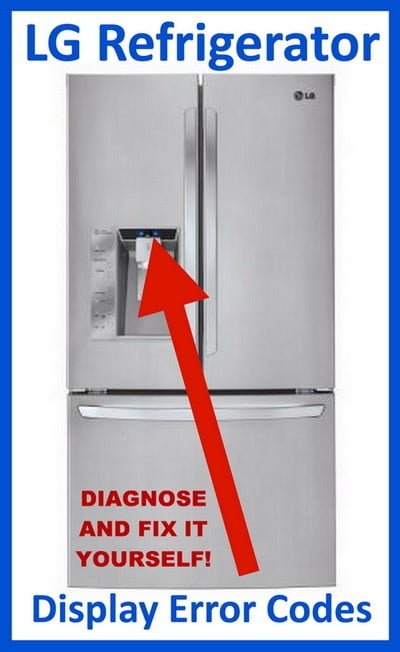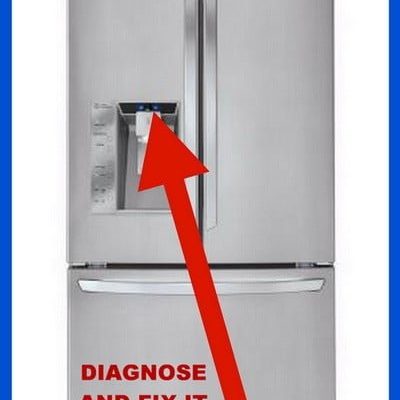
Refrigerators need to defrost periodically to prevent ice build-up, which can hinder their efficiency. Think of it like brushing snow off your car before driving—if you don’t do it, things can get pretty sluggish. An “HE” error means the defrost system isn’t working as it should, possibly because the defrost heater is faulty. But is your fridge still safe to use? Let’s delve into the details to better understand how to handle this situation and what steps you can take to fix it.
Understanding the “HE” Error Code
The “HE” error code is signaling you about a problem with the defrost system. The defrost heater warms up the coils in your fridge to melt any ice that forms. Imagine trying to enjoy ice cream straight from the freezer; without the defrost cycle, your fridge coils would be as frosty as that ice cream. If the heater doesn’t work properly, ice can accumulate, impacting the fridge’s ability to keep your food at the right temperature.
So, why should you care about this? Well, if your fridge can’t defrost, it can’t run efficiently. It’s like trying to run a marathon with weights attached to your ankles—it makes it harder for the fridge to do its job. If left unchecked, this can lead to higher energy consumption as the fridge works overtime to maintain the set temperature, potentially increasing your electricity bill.
An unresolved “HE” error could also mean your fridge won’t maintain an ideal temperature, leading to spoiled food. Nobody wants to open their fridge to a wilted salad or sour milk. Therefore, while the fridge may still technically operate, it’s not working as effectively or safely as it should. To ensure your appliance’s longevity and your food’s safety, it’s crucial to address this error code promptly.
Common Causes of the “HE” Error
The “HE” error code is commonly linked to a few key issues, starting with the defrost heater itself. This component may simply be malfunctioning or have failed altogether. Picture your phone’s battery refusing to charge—without power, nothing works. Similarly, if the heater isn’t working, ice won’t melt, and the error code appears as a result.
Another culprit could be the defrost sensor or fuse. These components help regulate the defrost cycle, ensuring it kicks in at the right time. If they fail, it’s a bit like a broken alarm clock that doesn’t go off when it should, causing confusion and delays. This disruption in the cycle can lead to the accumulation of ice and result in the dreaded “HE” error.
Lastly, wiring issues could also cause the “HE” code to light up. Damaged or loose wires might prevent the heater from receiving power, much like a loose cable prevents your TV from displaying a clear picture. Inspecting these wires could reveal visible damage or connections that need tightening. Ensuring all wiring is intact and secure can sometimes resolve the issue without the need for further repairs.
Steps to Fix the “HE” Error Code
If you’re comfortable doing a little troubleshooting, you can address the “HE” error yourself. Start by unplugging your refrigerator. Safety first! This ensures that you won’t get an unpleasant shock while investigating. Next, check the defrost heater. It’s usually located near the evaporator coils behind an interior panel at the back of the fridge. If you’re unsure, check your user manual for guidance. If the heater looks burnt out or damaged, it likely needs replacing.
If the heater appears fine, move on to examining the wiring. Inspect the cables around the defrost heater and sensor/fuse. Ensure the wires are in good condition and securely connected. You can gently tug on each wire to confirm that they’re not loose. If you find a disconnected wire, reconnect it and see if the error persists after plugging the fridge back in.
Should these steps not resolve the issue, or if you don’t feel comfortable performing them, it’s a good idea to call a professional technician. A skilled expert can quickly diagnose and fix the issue, saving you the hassle of incorrect DIY repairs. Remember, sometimes investing in professional help can be more cost-effective in the long run, especially if you’re unsure about the intricacies of refrigerator repair.
Preventative Tips to Avoid Future Errors
Once you’ve tackled the “HE” error code, it’s wise to adopt some preventative measures to keep your fridge running smoothly. Regular maintenance goes a long way in avoiding future complications. Just like a car needs regular oil changes to run smoothly, your fridge requires periodic checks to ensure all components function correctly.
To prevent ice build-up, make sure your fridge is always kept at an appropriate temperature—usually between 37°F and 40°F for the fridge section. Avoid overloading your fridge, as this can hamper airflow and contribute to ice formation. Think of it as trying to stuff your closet full; too much in there, and airflow is stifled.
Also, keep an eye on the door seals. If they’re worn or torn, they can let warm air in, which can lead to condensation and, ultimately, ice. Testing them is simple: close a dollar bill in the door and try pulling it out. If it slips out easily, it might be time to replace the seal. Regularly ensuring these small things are in order can prevent bigger issues down the road.
By taking these steps, you not only prevent the “HE” error from cropping up again but also ensure your LG refrigerator stays in tip-top shape, keeping your food fresh and your energy bills low.
